Sport at Philips
Philips, health and sport – a golden trio since the foundation of the Philips Sports Association (Philips Sportvereeniging) in 1913. It just goes to show that the company’s mission today – ‘Improving people’s lives’ – dates back a long way. The current mission reflects the importance the company has attached to physical exercise and leisure time for more than a hundred years. Terms like work-out and vitality program may be modern, but the underlying aim is the same as it was in the company’s early years.
Philips Sports Association
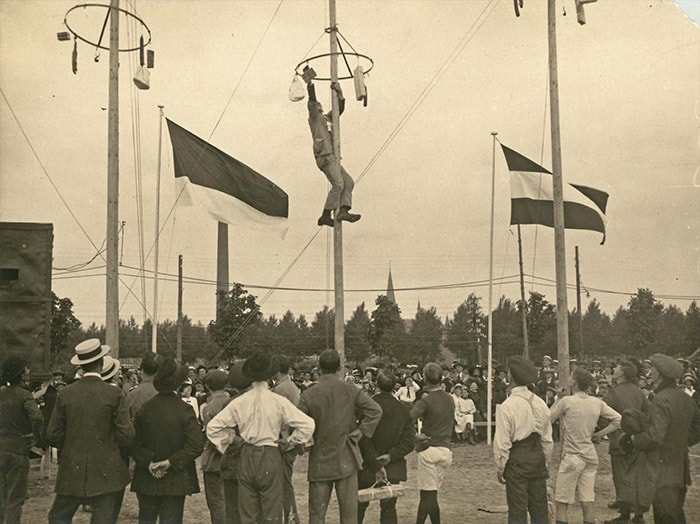
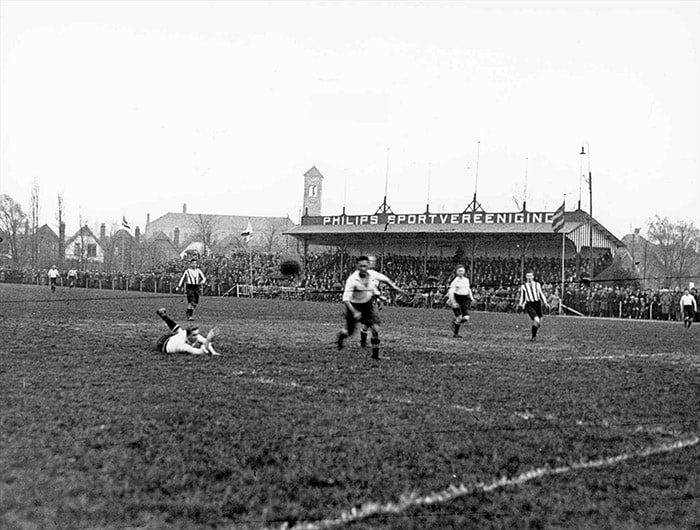
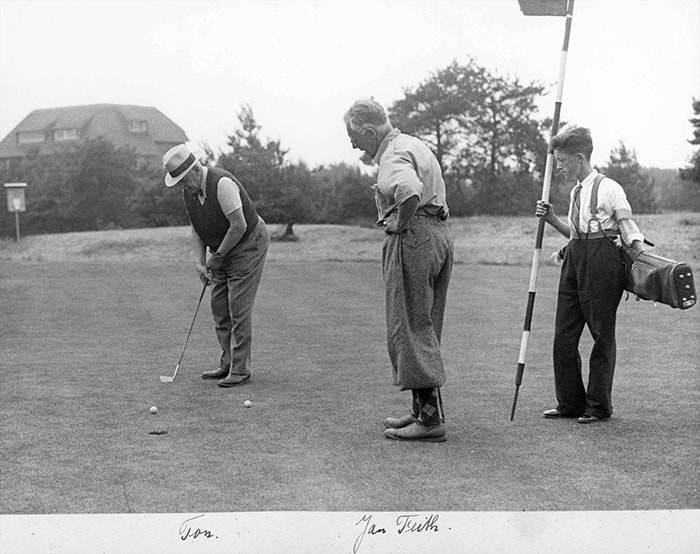
around 1930-1935, ©Philips family archives
On August 31, 1913, Philips employees described the aim of the Philips Sports Association as ‘to improve the physical and mental wellbeing of employees’. The Sports Association came to be set up as a result of liberation celebrations that were a great success. An entire weekend of sports and games had been organized at the Philipsdorp sports ground. In addition to athletics and gymnastics, there were also more unusual games on the program, such as tilting at the ring and three-legged races. With more than six hundred participants and thousands of spectators, the event exceeded all expectations. The Meierijsche Courant newspaper wrote about the ‘amazing way this global company had organized the celebrations in Philipsdorp’. On Sunday evening, after the celebrations had finished, the organizers set up the Philips Sports Association. Gerard and Anton Philips took their initiative further and within a few days the Philips Sports Association had been formally created in Anton’s office. The purpose of the new association was to provide the employees of the Philips factories with ‘an opportunity to engage in physical development and relaxation in the open air’.
From rhythmic gymnastics to jiu jitsu
Also included as part of the Philips Sports Association (known as PSV) were two organizations already in existence: the Philips Eleven football club (Philips Elftal, 1910) and the Gymnastics and Artistic Gymnastics Association (Gymnastiek en Turnvereeniging, 1912). In 1913 PSV also added the athletics, gymnastics and korfball sections. In addition to artistic gymnastics, the Gymnastics section also offered handball, hiking and track and field athletics. Over the years many other sections were added: carrier pigeon racing (1913), cricket (1915), hockey (1917), tennis (1923), handball (1923), fencing (1930), baseball (1941), water polo and swimming (1942, as well as diving from 1980 onwards), strength sports (boxing, wrestling, weightlifting and jiu jitsu, 1942), table tennis (1948), volleyball (1951), basketball (1970), badminton (1971), rugby (1974), bowling (1982), boules (1984) and squash (1991). In addition, PSV also organized cycle rides, outings and camping trips. Some of the latter activities were mixed, but for a long time the idea of women taking part in sport was a sensitive issue. At first, women and girls were only able to sign up for a few types of athletics and rhythmic gymnastics. Korfball with mixed teams met with fierce opposition from the Roman Catholic church. It was not until the second half of the 20th century that society no longer opposed sport as a leisure activity for women.
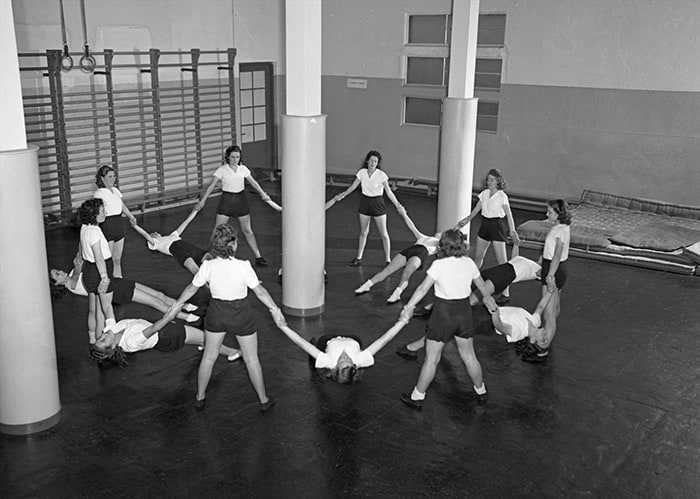
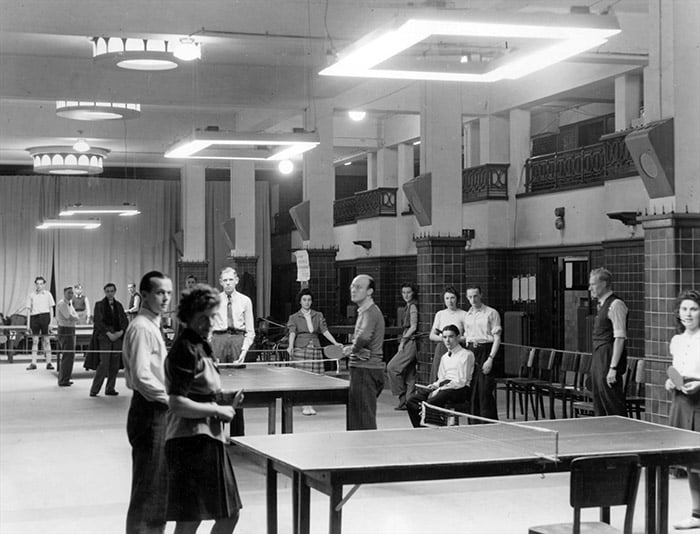
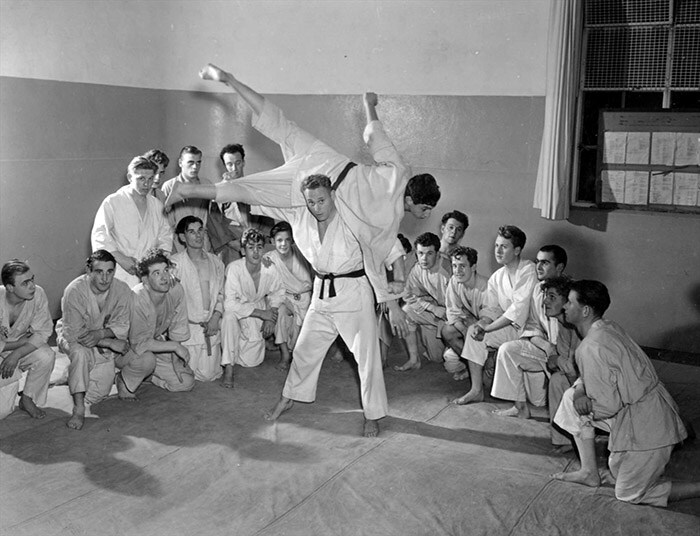
Character building
Anton Philips’ successors – Frans Otten (1939-1961) and Frits Philips (1961-1971) – also understood the importance of sport. Frans Otten was a big sports fan and was active in a range of sports, from hockey, korfball and tennis to golf, ice-skating and mountaineering. He was a member of every section of PSV: “Sport can teach us how to work as a team, it can teach us early on how to achieve something for a common objective.” In 1941 Frits Philips took over the reins from Frans Otten as chairman of the Philips Sports Association. Frits could often be found on the tennis court and well into old age he was a regular spectator in the stands at PSV football matches.
Right from the very beginning, the founders of the company, Gerard and Anton Philips, supported sports activities initiated by the employees. From 1921 onwards a fund called the Philips - De Jongh Ontspanningsfonds took on responsibility for sports activities. Sports clubs and small associations which had been set up by the employees but did not form part of PSV could rely on support from this fund. Set up by Anton Philips and his wife Anna Philips-de Jongh, the ultimate aim of this fund was to ‘promote the physical and mental wellbeing of the employees and their families in the broadest sense’. Sport always played a major role in Anton Philips’ life. When he was young he played a lot of tennis and even when he was quite advanced in years he could be found on ‘his golf course’ in Valkenswaard. Looking back, on PSV’s 25th anniversary Anton Philips gave his vision of the relationship between sport and work: “Sport strengthens the body and keeps the mind active; sport teaches you to make decisions quickly and creates a strong team spirit. There is a close connection between sport and work. The importance of good health and a strong, fit body for every employee cannot be underestimated. A sporting spirit in the factory and the office is of great value to any company.” In Anton’s view sport was not just relaxing, it was also character building.
Olympic games
The PSV football team, who all worked at Philips, won the national championships for the first time in 1929. Philips teams also performed well in other sports and PSV athletes broke world records. The Philips Sports Ground was not just made famous by the football team, it also became well known for the open PSV athletics competitions. Harry Broos (sprint, long jump) and Henk Kamerbeek (shot put, hammer throw) were the first members of PSV to take part in the Olympic Games, in Paris in 1924 and in Amsterdam in 1928. In the 1960s Eef Kamerbeek, Henk’s son, competed in two Olympic Games as a decathlete. When he retired as a sportsman, Eef worked as a trainer and Sponsor Coordinator at Philips and followed in his father’s footsteps as chairman of PSV Athletics. In 2000 he played an active role in organizing the European Football Championships.
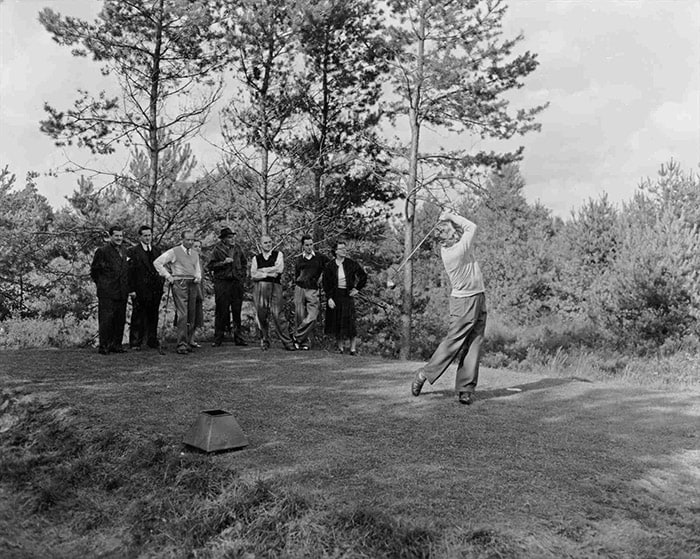
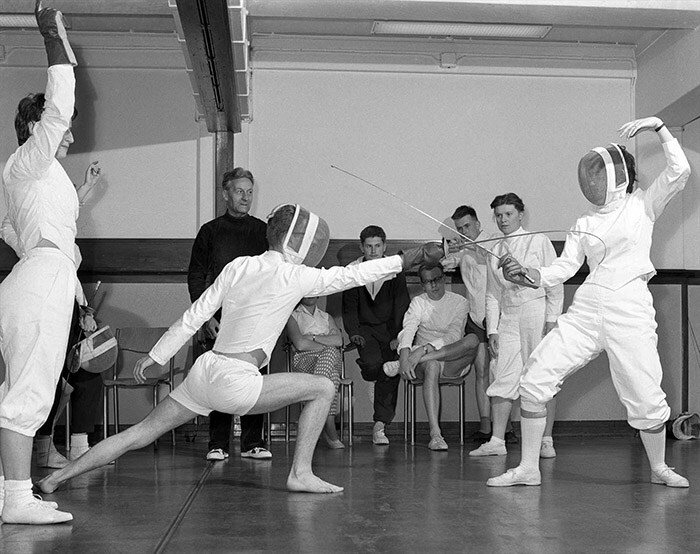
Keep fit at home
Philips didn’t just focus on the top sportsmen and women, the company also did its best to encourage its less sporty employees to engage in more physical activity. From 1936 onwards the Philips monthly publication ‘In en Om’ (‘In and Around’) ran a column with exercise programs for people to follow at home. These exercise programs were known as ‘kamergymnastiek’ (‘keep fit at home’). And a few years later the Sports Department started up its ‘pauzegymnastiek’ or ‘break-time keep fit’ classes which were initially available free of charge, both before and after work and at break time. Even when the company started charging a small fee and employees had to provide their own sports gear, demand for this activity continued. What’s more, special measures were taken to encourage older employees. For example, the Gymnastics section of PSV had a veteran’s section for men over the age of 30 years.
Philips sports parks
Philips also supported the various associations by providing sports facilities. When Philipsdorp was built the plans made provision for a sports and games park. In 1916 a sports park with a covered stand, changing rooms and showering facilities was built at the Philips Sports Ground. There was also a bandstand and a small café. In the Philips Ontspanningsgebouw events venue, built in 1929, sports clubs and other games clubs had the use of a large gymnasium and various rooms where people could come together to play games, for example. Thanks to Anton Philips, an indoor swimming pool was built in 1935. Philips employees were able to swim here for a small charge and the swimming pool was open at lunchtime for employees who had to commute to work. In the 1970s there were eight Philips sports parks in the Eindhoven area, covering a total of some eighty hectares. The sports parks in question were: ELTV (35,120 m2), Tivoli (30,600 m2), De Heihoef (98,300 m2), ’t Schoot (36,900 m2), Welschapsedijk (204,900 m2), Tegenbosch (139,400 m2), De Herdgang (331,000 m2), and Karpendonk (8,000 m2). Just like at Philips in Eindhoven, recreation and sports associations were also set up at other Philips sites in the Netherlands and in foreign countries. Competitions and tournaments were organized between the various sites so sports teams could compete with one another. For example, there was the well-attended annual Philips Summer Evening Football competition and the Philips Night Cap Cup hockey tournament. Another popular event was the Philips World Golf Tournament, where employees from all corners of the globe competed for the Anthony Guépin Challenge Cup.
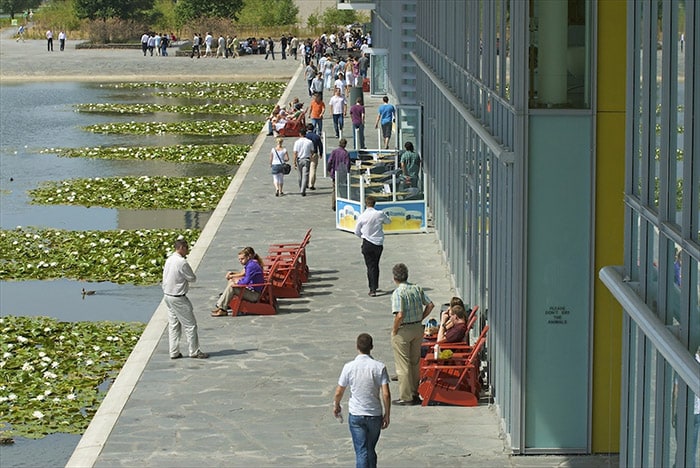
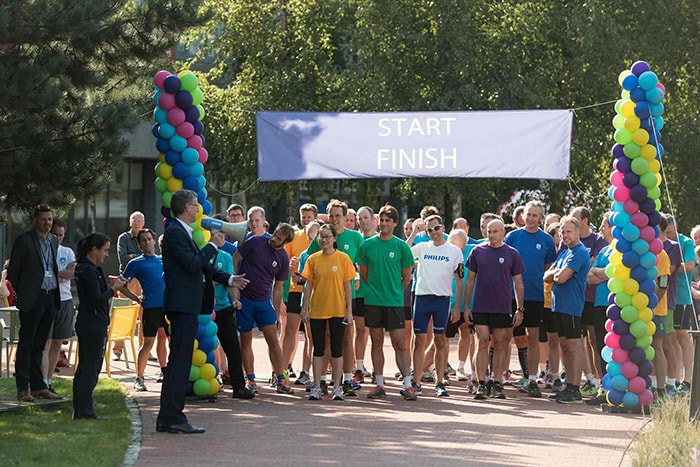
Company sport in the 21st century
In 1982 the federation of Philips Sports Associations was restructured to form ‘De Philips Bedrijfsport Federatie, PBF’ (‘The Philips Company Sports Federation’). This marked the beginning of a process whereby associations and sports parks no longer came under the direct management of the company. Over the years the need for sports activities organized by the company had declined and many of the sections even started to allow people who were not Philips employees to become members. These days Philips employees tend to meet up more as ad hoc teams, at a club or a sports school or they get together to train for a specific competition sponsored by Philips. The collective ‘break-time keep fit’ sessions have long been superseded by a brisk lunchtime walk with close colleagues. Both the employees and the company management are mindful of the famous Latin phrase ‘mens sana in corpore sano’: a healthy mind in a healthy body.

